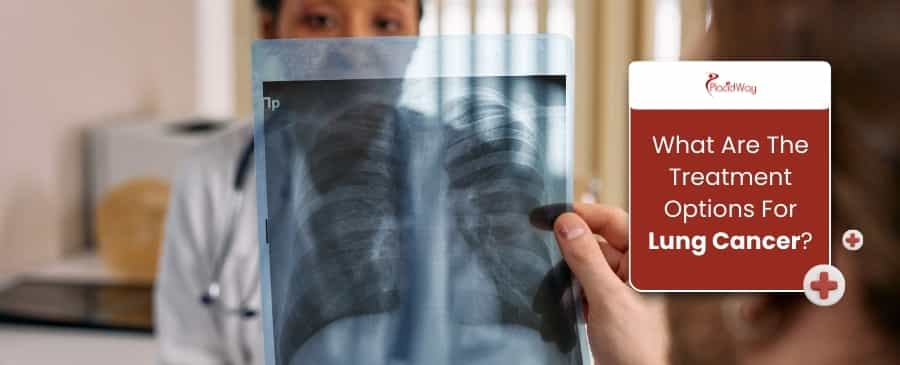Overview of Lung Cancer and Its Types
Lung cancer treatment options are diverse and depend heavily on the type, stage, and individual health, often involving surgery, chemotherapy, radiation therapy, targeted therapy, or immunotherapy, frequently combined for optimal outcomes.

The journey of lung cancer treatment is highly individualized. What works best for one person might not be the ideal path for another. Factors such as the specific type of lung cancer (non-small cell lung cancer or small cell lung cancer), its stage, your overall health, and even genetic markers within the tumor all play crucial roles in determining the most suitable approach.
Understanding these different pathways — from surgical interventions to advanced targeted therapies and immunotherapies — is the first step towards making informed decisions about your health.
What are the main types of lung cancer treatment?
The main types of lung cancer treatment include surgery, chemotherapy, radiation therapy, targeted therapy, and immunotherapy, often used individually or in combination to address the specific characteristics of the cancer.
Understanding the array of available lung cancer treatment options is crucial for anyone facing this diagnosis. Each method targets cancer in a unique way, and often, a combination of these treatments provides the most effective approach.
The primary goal is always to remove or destroy cancer cells, control the disease's spread, and improve the patient's quality of life.
When is surgery an option for lung cancer?
Surgery is an option for lung cancer primarily in early-stage non-small cell lung cancer when the tumor is localized and can be completely removed, and the patient is healthy enough to undergo the procedure.
Surgery is often considered the most effective treatment option for lung cancer when the disease is caught in its early stages, particularly for non-small cell lung cancer (NSCLC). The primary aim of surgery is to completely remove the tumor along with a margin of healthy tissue and nearby lymph nodes to ensure all cancer cells are eradicated.
Several types of surgical procedures can be performed, depending on the size and location of the tumor:
| Procedure Type | Description |
|---|---|
| Wedge Resection | Removal of a small, wedge-shaped piece of the lung containing the tumor. Typically for very small tumors or for patients with limited lung function. |
| Segmentectomy | Removal of a larger section of the lung, called a segment. This conserves more lung tissue than a lobectomy. |
| Lobectomy | Removal of an entire lobe of the lung. This is the most common surgical procedure for early-stage lung cancer and is often preferred if feasible, as it provides the best chance of removing all cancer. |
| Pneumonectomy | Removal of an entire lung. This is reserved for cases where the tumor is large, centrally located, or has spread throughout the entire lung and cannot be removed by less extensive surgery. |
How does chemotherapy treat lung cancer?
Chemotherapy treats lung cancer by using powerful drugs, usually given intravenously, to kill rapidly dividing cancer cells throughout the body, making it a systemic treatment often used for advanced or aggressive forms of the disease.
Chemotherapy is a foundational lung cancer treatment option, particularly for more advanced stages of non-small cell lung cancer (NSCLC) and almost always for small cell lung cancer (SCLC), which tends to spread quickly.
These drugs work by interfering with the cell division process, thus killing cancer cells. Because cancer cells divide more rapidly and uncontrollably than most healthy cells, chemotherapy drugs are designed to preferentially target these fast-growing cells.
What is radiation therapy for lung cancer?
Radiation therapy for lung cancer uses high-energy X-rays or other particles to destroy cancer cells or shrink tumors. It can be delivered externally or internally and is often used alone or in combination with other lung cancer treatment options.
Radiation therapy is a highly effective treatment option for lung cancer that utilizes targeted, high-energy radiation beams to damage the DNA of cancer cells, preventing them from growing and dividing. This leads to the death of the cancer cells. It can be a standalone treatment, especially for patients who are not candidates for surgery, or it can be used in conjunction with chemotherapy or surgery.
There are two main types of radiation therapy used for lung cancer:
- External Beam Radiation Therapy (EBRT): This is the most common type. A machine outside the body directs radiation beams at the tumor. Modern techniques, such as Intensity-Modulated Radiation Therapy (IMRT), 3D Conformal Radiation Therapy (3D-CRT), and Stereotactic Body Radiation Therapy (SBRT), allow for very precise targeting of the tumor while sparing healthy surrounding tissue. SBRT is particularly effective for small, early-stage tumors that might not be suitable for surgery.
- Internal Radiation Therapy (Brachytherapy): Less common for primary lung cancer, but can be used. In this method, a radioactive source is placed inside the body, directly into or very close to the tumor. This allows for a high dose of radiation to a very localized area.
What is immunotherapy for lung cancer?
Immunotherapy for lung cancer uses drugs to help the body's own immune system recognize and attack cancer cells. It primarily involves checkpoint inhibitors that release "brakes" on immune cells, allowing them to mount a stronger anti-tumor response.
Immunotherapy has revolutionized the landscape of lung cancer treatment, particularly for advanced non-small cell lung cancer (NSCLC) and is increasingly used in small cell lung cancer (SCLC). Unlike other treatments that directly target cancer cells, immunotherapy works by enhancing the body's natural defense system – the immune system – to identify and destroy cancer cells more effectively.
Common immunotherapy drugs used in lung cancer include:
- PD-1 inhibitors: Pembrolizumab (Keytruda), nivolumab (Opdivo), cemiplimab (Libtayo)
- PD-L1 inhibitors: Atezolizumab (Tecentriq), durvalumab (Imfinzi)
- CTLA-4 inhibitors: Ipilimumab (Yervoy), sometimes used in combination with PD-1 inhibitors.
Ultimately, the goal is to create a comprehensive, individualized plan that offers the best possible outcome while minimizing adverse effects and supporting your overall well-being. Don't hesitate to ask questions, seek second opinions, and ensure you fully understand your proposed treatment path.
If you or a loved one is exploring lung cancer treatment options and seeking comprehensive healthcare solutions, explore PlacidWay. PlacidWay connects you with leading medical facilities and specialists worldwide, helping you find personalized care and access to advanced treatments.


.png)









Share this listing